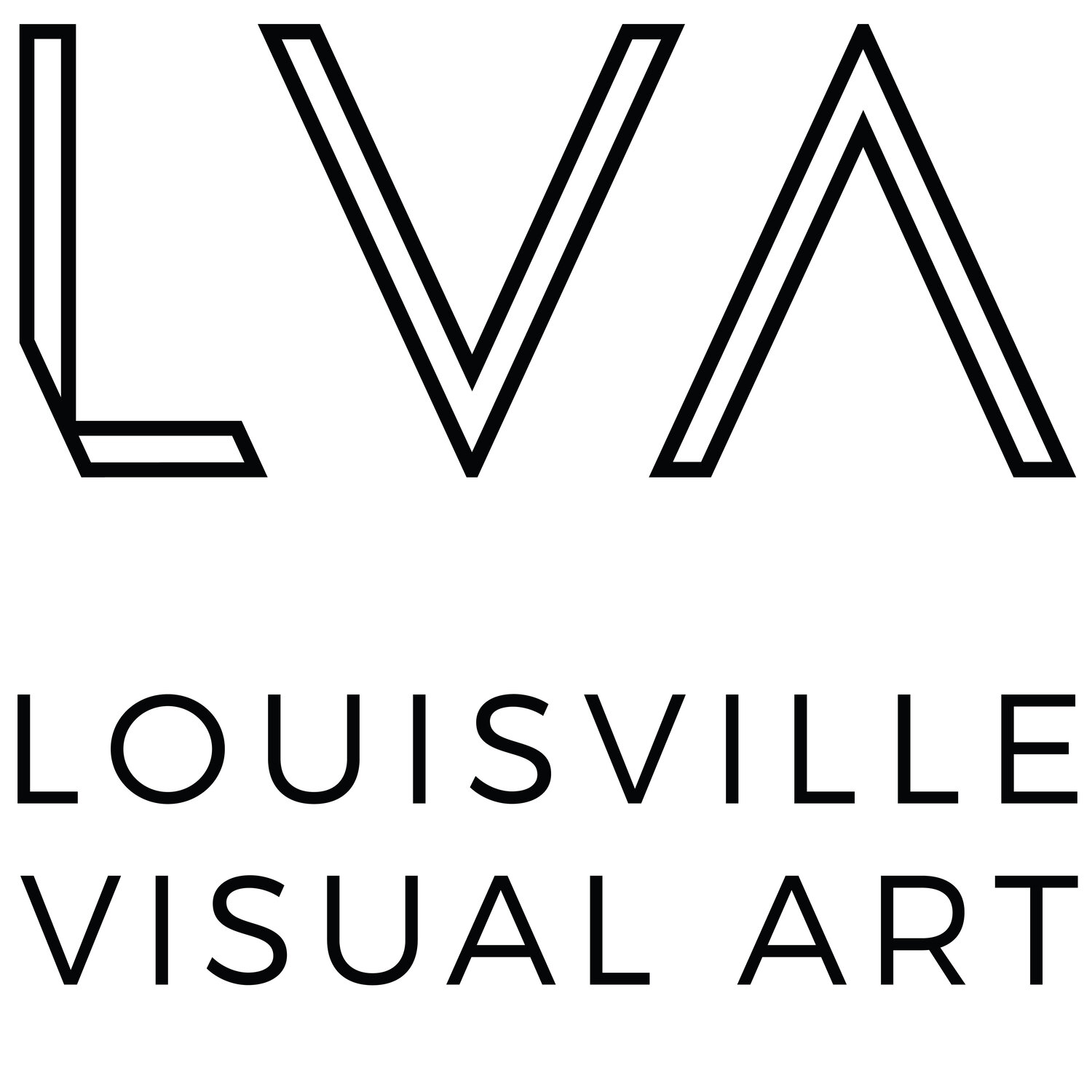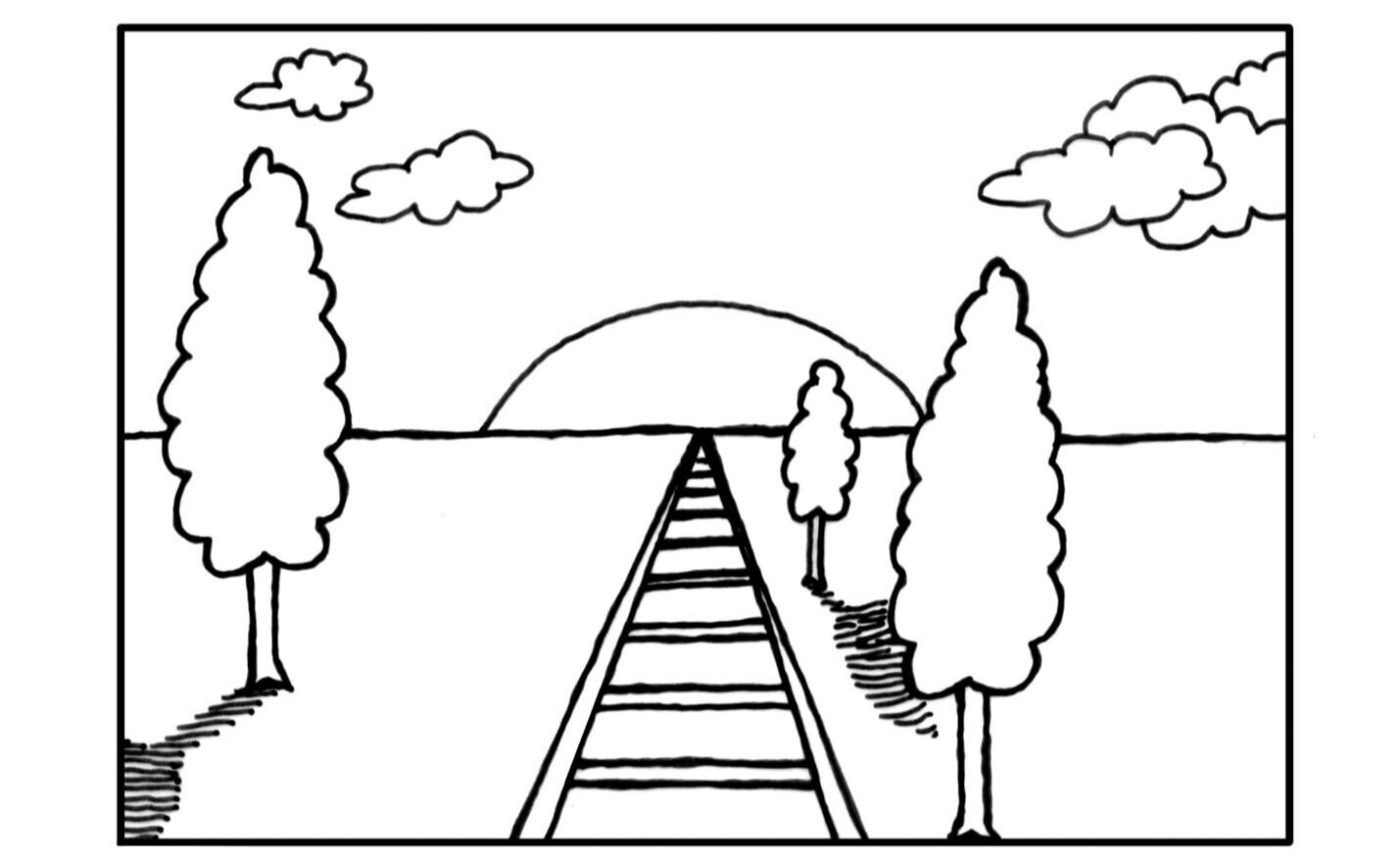
Hi Everyone!
We’re excited to launch Creative Clues, a new monthly feature of Art Starts at Louisville Visual Art. With each new Clue, we’ll provide some pointers to help you succeed and improve.
Creative Clues Showcase
CLUE: SPACE
Deadline for artwork submission is December 31, 2021 at midnight. The Creative Clues 2021 December Showcase will be up January 3, 2022. Happy New Year!
How to: Space Exploration!
Space is a basic art element that refers to how objects in an artwork interact with their environment (and each other) to create the illusion of depth.
Positive and Negative Space
There are many techniques to create space in an artwork. But the simplest ways to show space the use of Positive space and Negative space.
Positive Space
Negative Space
Positive Space
Positive space is the area in your composition that is taken up by the main subject.
Negative Space
Negative space is the area that surrounds positive objects.
Beautiful Winter Trees – a Positive and Negative drawing
Now that most of the trees have lost their leaves. Take a look out the window and notice all of those beautiful branches and limbs and twigs. Make two drawings of the same tree. On the positive space tree drawing, illustrate inside the tree, and on the negative space tree drawing, illustrate all around the tree, between the branches, limbs and twigs. Can you make up a different story about each drawing? How does the surrounding space of each drawing effect your story?
You will need:
paper
pencil
markers, crayons
Negative
Positive
How to Use Space in Art
An object on its own does not have any frame of reference. How big is it? How far away is it? We do not know this until we place something else in the space to give us something to compare the object to.
A flat image can create the illusion of depth by using techniques such as:
Overlapping objects
Varying the size of objects
Varying the color of objects
Overlapping
Vary the size
Vary the color
Drawing the same object at different sizes will tell the viewer that the smaller the object, the further away it is. And vice versa. A horizon line allows the viewer gain a better understanding of an object’s placement.
A small object closer to the horizon will appear far away
A large object close to the horizon line will appear huge!
The depth of your artwork will be greatly impacted by what color you use. As a general rule, an object that is darker will appear closer to the viewer and an object that is lighter will appear further away to the viewer
Types of Space in Art
Foreground, Middle ground, Background
Foreground is the space of the composition that is nearest to the observer, it is going to be the part of the painting, print, photograph, or drawing that is closest to you or appears the largest.
Middle ground is the space occurring between the foreground and background, it’s the middle part of our composition.
Background is the space behind the main object of composition. This will be the part of the composition that looks like it is furthest away from you.
Shadow Box – a foreground, middle ground and background story.
Do thumbnail (CC January 2021 archives) drawings for this project. Make sure to have a foreground, a middle ground and a background. Find an old shoe box and remove the lid, you may use the lid or the box for your shadow box (the lid may be easier).
Make sure all of your drawings for this project fit the back side of your shoe box, and line up on the bottom edge of the box area.
You will need:
an old shoe box or shoe box lid
1 piece of paper for your thumbnail drawings
3 pieces of paper big enough to cover the large part of your box or lid
pencils, markers, colored pencils, crayons
scissors
small amount of scrap corrugated cardboard
glue stick or school glue
There are three steps:
1. Draw you background, color it, now glue it onto the inside back of the shoe box.
Draw around the box to get your illustration shape.
Color your Background.
Cut out your Background and glue inside the box.
2. On a new piece of paper, draw and color your middle ground, cut it out. Glue a few pieces of small scrap cardboard onto the back of your middle ground illustration. Now put glue on the scrap cardboard pieces and glue to your back ground.
Color your Middle Ground
Cut out the Middle Ground.
Glue the cardboard scraps onto the back, and then put glue on top of the cardboard.
Then glue the Middle Ground inside the box
On the last piece of paper, draw and color your foreground, cut it out. Glue a few pieces of small scrap cardboard onto the back of your foreground illustration. Now put glue on the scrap cardboard pieces and glue to your middle ground.
Color your Foreground.
Cut out your Foreground.
Glue the cardboard scraps onto the back, and then put glue on top of the cardboard.
Then glue the Foreground inside the box
You now have a completed Shadow Box. Notice how the shadows from each layer help define the Foreground, Middle
Linear Perspective
Linear perspective is one a powerful technique that an artist will use to create the illusion of space in an artwork. Perspective requires a horizon line and a vanishing point, every line going into the distance will merge towards the vanishing point. Every line that is parallel to the horizon line will get closer and closer to one another as they approach the horizon line.
Look at the railroad track in the drawing below. These 2 track lines are parallel, but as we stand at the end of our picture and look towards the end of the tracks (the vanishing point), the 2 track lines merge, and the wooden slats get closer and closer together the further away the track gets from us. Using (one-point) perspective we have created the illusion of depth!
Space – one of art’s great elements and “the final frontier” – plays an important role in helping an artwork come to life. Space helps create the illusion of depth and will draw the viewer into the artwork.
Fun fact.
Most sun rays appear to converge towards the sun. Sun rays appear to merge on the sun's location for the same reason that roads or railroad tracks appear to merge towards the horizon, one-point perspective.
Take a look at this art quilt by Faith Ringgold. What types of Space in Art do you see? How has she used colors to show space?
Faith Ringgold, Tar Beach#2, 1990
Faith Ringgold is an American artist best known for her colorful quilt paintings about American history and politics. The artwork above is from, Tar Beach, her first book children’s book.
Tar Beach is the name of the roof on Cassie’s Harlem apartment building, and her dearest wish is to be free to go wherever she wants to go. She dreams of flying, and all the things she might see if she could. You can learn more about Faith Ringgold at: faithringgold.com
Bob McCall is using space in his space illustrations. Describe his foreground, middle ground and background.
Robert McCall, First Men on the Moon, 1971
Robert T. (Bob) McCall, one of the world's leading illustrators of space themes. His colorful canvases show the visions of America's space program since its beginnings. Learn more about him at: mccallstudios.com
“Imagination will often carry us to worlds that never were,
but without it we go nowhere.”
― Carl Sagan
Send in your SPACE artwork
Deadline for artwork submission is December 31, 2021 at midnight.
Content: family friendly (LVA will determine if artwork is appropriate to share online.)
Ages 5 to 105!
Photo Guidelines: here is a nifty link, if you want to learn to take great pictures of your artwork
Consent and Permission: By filling out the form below, you give LVA permission to display your artwork and information in the Creative Clue Showcase. *NOTE: if you are under 18 years old, please have a parent or guardian complete the form.
Address: email artwork to: artstartshere@louisvillevisualart.org
Social Media: you may share your artwork on Instagram: #artwithinreach, #ArtStartsAtLVA
LVA will notify you if your artwork is in the Creative Clues Showcase at the end of the month. artstartshere@louisvillevisualart.org
Remember to use your past How To pages to come up with creative solutions for your new clue:
January 2021 - Winter -Thumbnails
February 2021 - Heart - Research
March 2021 - Chair
April 2021 - Spring
May 2021 - Breeze
June 2021 - Light
July 2021 - Together
August - Trees
September - Apples & Pears
October - Pets
November - Leaf

























